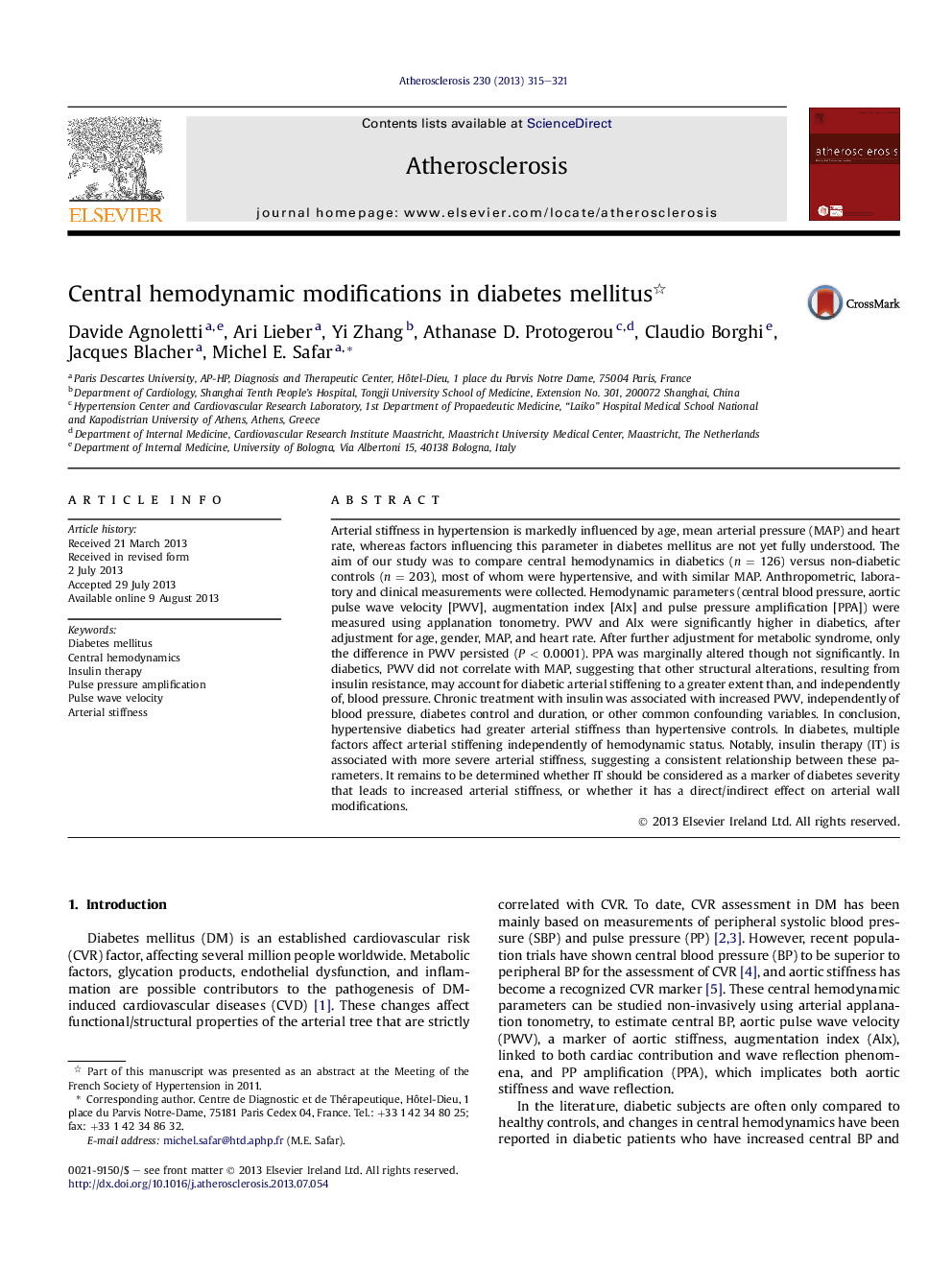| Article ID | Journal | Published Year | Pages | File Type |
|---|---|---|---|---|
| 5947034 | Atherosclerosis | 2013 | 7 Pages |
â¢Arterial stiffness was higher in diabetics than in non-diabetics independently of BP.â¢Mechanisms of arterial stiffness in diabetes differed from those observed in hypertension.â¢Chronic insulin therapy would appear to be associated with increased arterial stiffness.â¢Hypertension and diabetes affect arterial stiffness by complementary mechanisms.
Arterial stiffness in hypertension is markedly influenced by age, mean arterial pressure (MAP) and heart rate, whereas factors influencing this parameter in diabetes mellitus are not yet fully understood. The aim of our study was to compare central hemodynamics in diabetics (n = 126) versus non-diabetic controls (n = 203), most of whom were hypertensive, and with similar MAP. Anthropometric, laboratory and clinical measurements were collected. Hemodynamic parameters (central blood pressure, aortic pulse wave velocity [PWV], augmentation index [AIx] and pulse pressure amplification [PPA]) were measured using applanation tonometry. PWV and AIx were significantly higher in diabetics, after adjustment for age, gender, MAP, and heart rate. After further adjustment for metabolic syndrome, only the difference in PWV persisted (P < 0.0001). PPA was marginally altered though not significantly. In diabetics, PWV did not correlate with MAP, suggesting that other structural alterations, resulting from insulin resistance, may account for diabetic arterial stiffening to a greater extent than, and independently of, blood pressure. Chronic treatment with insulin was associated with increased PWV, independently of blood pressure, diabetes control and duration, or other common confounding variables. In conclusion, hypertensive diabetics had greater arterial stiffness than hypertensive controls. In diabetes, multiple factors affect arterial stiffening independently of hemodynamic status. Notably, insulin therapy (IT) is associated with more severe arterial stiffness, suggesting a consistent relationship between these parameters. It remains to be determined whether IT should be considered as a marker of diabetes severity that leads to increased arterial stiffness, or whether it has a direct/indirect effect on arterial wall modifications.
